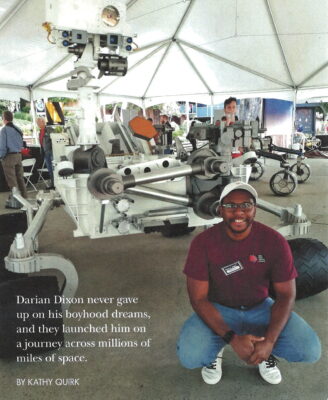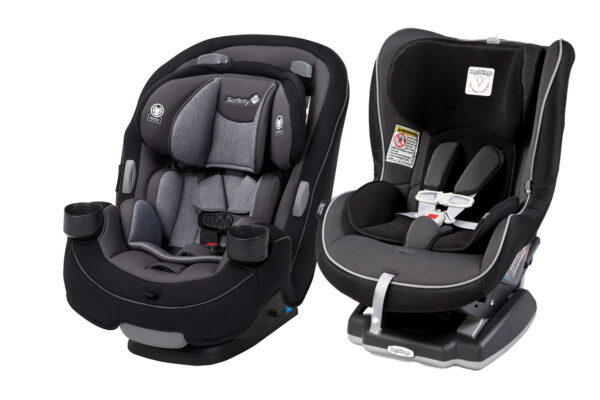Car Research

Freelance article written for ADAMM (Automobile Dealers Association of Metro Milwaukee)
Figuring out what vehicle to buy a vehicle – new or used – is getting easier. If they choose to use it, the resources to evaluate potential purchases are right at consumers’ fingertips online or on their mobile device.
The average buyer spends upwards of 16 or 17 hours researching vehicles before even setting foot in a dealership. That’s the estimate of local dealership sales and marketing managers.
“That would be on a variety of sites,” says Tom Ewald, managing partner of the Ewald Automotive Group. “It could be reviews, it could be visiting marketplace sites like Auto Trader, it could be the dealership website. Major automotive magazines are online and usually cover trucks as well as cars, he adds.
“Motor Trend now has the car of the year, the SUV of the year, truck of the year,” says Ewald. So, if I’m looking for a used pickup truck and in 2015 the truck of the year was a Ford, in 2016, it was a Ram and Ram just got it again in 2019, that gives you a nice perspective.”
“I would say consumers look at overall quality and reliability on sites like Consumer Reports or J.D.Power, says Chuck Olsen, sales director for Boucher Automotive. “Once they narrow it down, they’ll start comparing actual models.” Sites like the Insurance Institute for Highway Safety (iihs.org) and fueleconomy.gov also provide value information to buyers.
Jim Flanary, director of used car sales at the Darrow Automotive Group who also oversees new car inventory, says consumers often take several steps in researching. “They may be looking for a van and they’ll go to a site like Consumer Reports” for an initial filter. They’ll look at how a Toyota Sienna, a Honda Odyssey and Kia Sedona compare, for example. “They go to a website to eliminate one out of their equation, looking at the reliability (for used cars) from previous owners, the cost to own and other factors.”
Like anything on the Internet, consumers need to check on the reliability of the resources.
Consumer Reports, which was established in 1936, prides itself on its unbiased approach.
“I think the competition for information has never been more crowded with more and more outlets offering up information,” says Mike Quincy, automotive writer for Consumer Reports, which offers articles online, but requires a paid membership for the detailed evaluations and reliability surveys. “The difference between what you’re getting as a member of Consumer Reports and what you’re finding for free online is that we buy our own products.”
That means, he says their employees buy vehicles anonymously so they’re getting the same version an average customer does rather than specially modified vehicles designed for the automotive press.
In addition to its website, consumerreports.org, the magazine’s print edition reviews cars every issue and its April issue is entirely devoted to new and used cars, car seats, car safety and other car-related information. Quincy who is based at the test track in Connecticut says the cars are not only tested on the track, but lived with daily.
“We drive the cars home every night. We drive our kids home from school, drive the soccer car pool, go to Home Depot and take it on vacation.”
According to local experts, once buyers have narrowed down their choices, they can turn to a variety of sites to shop around to see what’s available in various price ranges. Cartrader.com, cargurus.com, Kelley’s bluebook (kbb.com), Craig’s List and dealership and manufacturer’s websites are among the many sites give buyers a chance to see price ranges, before they even set foot in a dealership.
Consumers sometimes use what they find on a website as a negotiating tool, especially on used cars, says Flanary. That’s where the value of visiting a dealership comes in to help them compare apples to apples.
“They’ll come in and say they found the same model with fewer miles for $500 less. You need to help them understand why your vehicle is priced where it’s at. The other car may have three millimeters of wear left on the tires, the brakes are halfway worn out and when you pull the Carfax, there’s it’s been in an accident. Is that worth $500?” Factors like certified inspections and warranties can add to the value a dealership adds.
In general, says Olsen, dealerships are aware people are checking prices. “If we’re not priced ultra competitively, they won’t call us.”
Consumers that don’t already have a relationship with a dealer, may turn to Google, the BBB, word-of-mouth and dealership websites. Interestingly, says Olsen, some people like to check out the staff pictures and biographies on the websites to see whom they might be dealing with and what their experience is.
Even with all the research available, some buyers, particularly millennials focus on price/monthly payments. “They don’t care what their driving or what the manufacturer’s symbol is on it,” says Flanary. “They just say, show me what I can get for $199 a month.”
Dealers see today’s buyers who’ve done their homework and are ready to ask questions as assets, says Olsen.
“People who do their research… It makes it easier for us. If they’re coming in, they’ve chosen our dealership.”
Ewald says good research can save customer and dealer time. “I think our people have stepped up their game to make the process expeditious and try to save and respect the customer’s time.”
Quincy echoes the point that research is vital for what for many people is their second largest purchase of a lifetime. “I’ve had car salespeople tell me they like to see consumers coming in with their own copy of Consumer Reports because it shows they’ve done their research and are ready to make a decision.”
Figuring out what vehicle to buy a vehicle – new or used – is getting easier. If they choose to use it, the resources to evaluate potential purchases are right at consumers’ fingertips online or on their mobile device.










